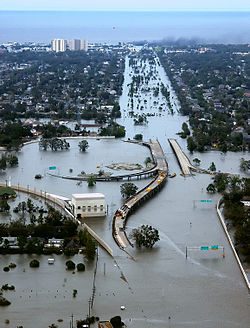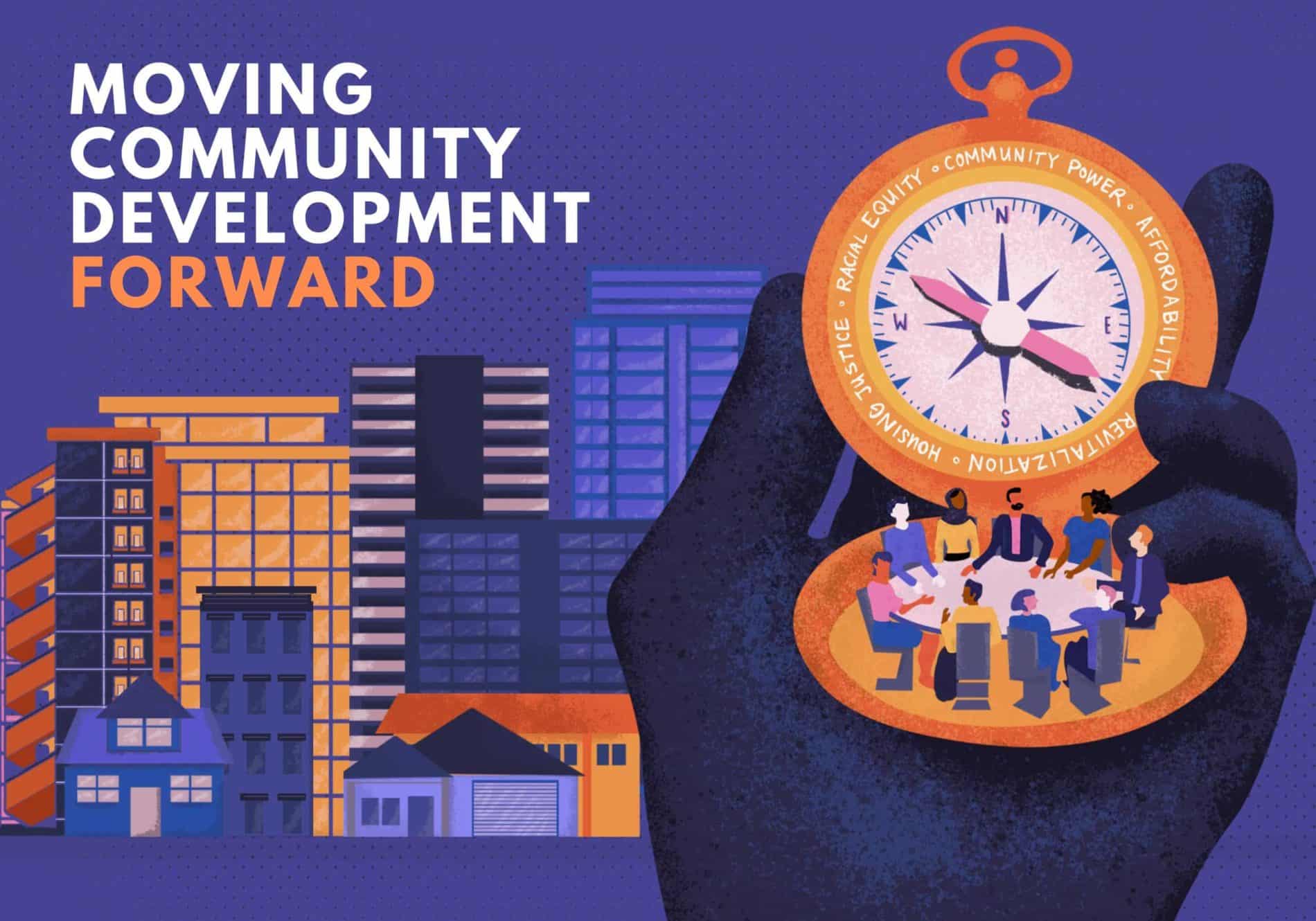In the halcyon days of my youth, way back in 2006, I went to New Orleans. I traveled there at the behest of the corporation that I worked for at the time, as we had made a $2 million disaster recovery commitment to the city, and we were trying to figure out how to spend it.
Now, there's two things you need to know about spending $2 million: First, that's a lot of money, and second, it's really not very much money at all. When you get right down to it, in dealing with a post-crisis situation of the scale of Hurricanes Katrina and Rita in the troubled city of New Orleans, spending that kind of money in a way that was both responsible and effective was a damned hard thing to do.
So there I am, the well-meaning Yankee, fresh off the plane in my shiny city slicker best, traipsing through the Lower 9th Ward. I was there several months after the floods had receded, but it was still a silent, mud-stained, wracked and ruined wasteland. I remember picking up a dirty and detached doll's head (Woody, from Toy Story—a memento I've kept with me always. He's staring at me as I write this now), and thinking, well, I've got to start somewhere.
I had friends who'd grown up in the Big Easy, and we got on the phone together and made a dozen calls, inviting their local friends still in town to get together for drinks that night. They were young hipsters and professionals: designers, tech geeks, journalists. We hung out in one of the sleek, still functioning hotel lobby bars along Poydras Street and I asked them to tell me about their city, their work, and their concerns. It was a long list: an overwhelmed city administration, an anemic nonprofit sector, corporate leaders who were MIA, moribund police and courts, and a long history of blight and abandonment suddenly made 100 times worse by the damage of the storms.
As the night wore on, I reflected on the work I normally did in the community development sector back in NYC. I began to realize that there was a great deal I was taking for granted among the various partners I worked with. As much as my colleagues and I might have complained about the troubles we faced, and the apparently intractable difficulties of stabilizing low-income NYC neighborhoods, frankly, that weren't nothin' compared to what New Orleans was going through.
I began to understand that, in comparison, NYC worked pretty darn well. Why? What made it work? How did those parts fit together?
And suddenly I realized that there were parts. Indeed, there was something like a whole ecosystem that allowed services to be delivered, housing to be built, programs to evolve, risks to be taken. Roughly speaking, they fell into the following categories:
- The Nonprofit Sector: Every city has a nonprofit sector. In the case of NYC, many of the groups that I worked with in community development had evolved from the bad old “the Bronx is burning” days—organizing local residents and reclaiming neighborhoods street corner by street corner, vacant building by vacant building. Over the years, they grew quite sophisticated by developing better strategies for raising philanthropic capital, securing government contracts to deliver services, and earning revenues through becoming builders in their own right (and retaining the relatively generous fees that stem from building new housing and community facilities). They reinvested this capital in further expanding programs and capacity. Today, we have an entire cohort of nonprofit organizations and nonprofit leaders who learned from doing, and who did it with darn little.
- The Public Sector: At first, the city's solution to the collapse of the real estate market in NYC was to take over those really bad buildings and become the landlord of last resort. It was an understandable intention and a logical reaction given the lack of alternatives at the time. But running deeply distressed properties on a tight budget managed by a substantial bureaucracy was not really what you might call a recipe for success. Under the Giuliani administration, NYC started finding ways to divest itself of that huge portfolio of buildings and vacant lots and get out of the business of being a landlord. I have no love of the former mayor's approach to governing, and I don't agree with all the decisions made about how to dispose of those properties, but when I look at how many neighborhoods have benefited from the renewal of those properties by new owners I have to admit it was a far better solution in the main than what we had before. The city sold buildings for $1 to those who would agreed to either fix them up or knock them down and make something even better. It developed numerous programs and strategies to support nonprofit affordable housing developers, local entrepreneurs, and even corporate developers who had never built affordable housing before. It created many incentives to tempt banks to lend. In the end, it converted an enormous number of distressed and abandoned properties into productive and occupied homes.
- The Banks: In 1977, the Community Reinvestment Act was born. The idea was to create incentives for banks that took deposits from residents of low-income communities to provide credit back to them in the form of property, business and consumer loans. Banks didn't love this at first. And it got even worse in the mid 1990's when the accountability requirements to insure compliance with CRA were significantly expanded. But then a surprising thing happened: the banks discovered that there was both a real appetite for credit in these communities, and that low-income borrowers did have the discipline and resources to repay. When the Low Income Housing Tax Credit created really steep incentives for corporations to invest in the creation of affordable housing, things really began to take off. Banks realized that they needed local nonprofit partners and the capacity of the city to invest in buildings at scale. Local partners knew what sites could be developed, and could effectively engage local partners to support that development. HPD and other public sector partners worked with the banks to leverage those private dollars through public incentives, and the housing sprung up like mushrooms after rain. As a matter of fact, NYC became an overbuilt city for a short while there in the 1980s—too many places to live and not enough people. Of course, this was all before rampant, unchecked securitization stepped in and ruined the party. Bad banks! Naughty banks! But every one of those very naughty banks still has a team or two tucked away that’s exclusively dedicated to making those CRA based loans to develop affordable housing, invest in economic development, strengthen financial literacy, and all kinds of other nifty and (slightly self-interested) noble deeds.
- The Philanthropic Sector: In case you haven't noticed it, NYC is full of damn wealthy people and institutions. Just chock-a-block. You can't throw a platter of tiny muffins without smacking a family charity, corporate foundation, or venture philanthropist in the noggin around here. And that's a really, really good thing for NYC. These folks were raised in this town, or made their fortune here. They enjoy the civic and cultural life of this town, and they are ready, willing, and able to spread a little bit of their surplus cash around to nudge it along. And it doesn't all go to pay for swank, self-congratulatory shindigs at Jazz at Lincoln Center. A whole big mess of it goes to support those on-the-ground troops out there digging through the boroughs to find the few remaining developable vacant lots, or to the ducky young lads and lasses running food pantries and job training regimes and after school programs. And my goodness but some of those philanthropy people are very smart indeed, and know a great deal about policy, and programs, and the power behind the throne. Thank goodness they are on our side. Please give more.
- The Intermediaries: You know: LISC, Enterprise, NeighborWorks America, the
Corporation for Supportive Housing, the Low Income Investment Fund, the Nonprofit Finance Fund, the Association for Neighborhood and Housing Development, and loads of other roaming gangs of meddlers. They are kind of like the glue that holds everything together. Or rather, the acidophilus that keeps it all moving. They are the trade associations of the community development sector: advocating for a policy change here, pushing a best practice there, wheedling a little money in between (and then a whole lot more money), and finding ways to overcome the thousand little cuts the could otherwise slowly drain the sector. They are very active now, and very well established, even to the point of becoming institutions in their own right. But believe me, having been someplace where their people are not on the ground sniffing out trouble, cajoling unholy alliances, and horse-whispering into the ears of funders: you really notice the absence. You notice it because suddenly nothing works.
And there's just one more thing about all this: in NYC, the nonprofit leaders and the elected officials and the bankers and the grantmakers and the intermediary go-betweens all talk to each other. You know, they know about each other's kids, and they share gossip about their colleagues, and they steer their friends towards new jobs, and they complain about how expensive everything is and how hard they are working, and all the other hundreds and thousands of things that make of this mess a community, an ecosystem. A whole food chain where ideas flow up and money flows down, more or less. It’s not always pretty, and it’s not particularly efficient, but it’s a helluva a lot better than what I saw down in New Orleans after the storms.
Now, it's a little bit wrong to pick on the Big Easy. I could just likely chosen my hometown of Dayton, Ohio. Or Baltimore, or Detroit, or Las Vegas, or any of a thousand other places in deep kimchi and where it’s not just that the resources are thin, but there's a lack of the social lubrication between all these necessary parts to grease the wheels of change.
But when we last left our hero, he was two sheets to the wind in a hotel bar lost in thought among a serious-miened gaggle of hurricane survivors. I realized that what I needed to do, what it made sense to do with my piddly little $2 million was to invest as best as I could in thickening some of those relationships. That's a story for my next blog. Stay tuned.






Great article. I wish more folks would think and talk about systems rather than isolated programs.